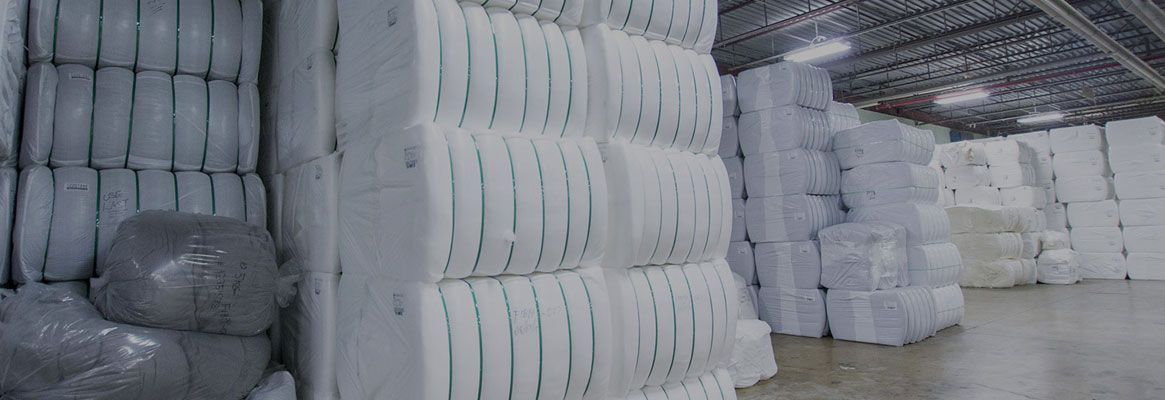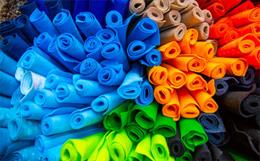The worldwide nonwoven industry has grown steadily at about7.5% per annum in tonnage in the last decade. While the nonwoven industriesgrowth in North America, Europe and Japan has slowed with maturity, thesecountries are still growing at 5% per annum. A significant portion of worldwidenonwoven expansion is due to the rising demand for these materials as emergingeconomies like Asia expands. India and China are the key players contributingto this growth.
India has a huge opportunity to capitalize on much larger portion of thisgrowth. Government of India emphasized the promotion of all steps of thetextile industry, especially by paying attention to the innumerable use ofnonwovens in unnoticed applications. Indian industry is starting to exposeitself to international trends by inviting foreign players to partner withentrepreneurs in India. As nonwovens and technical textiles have beenconsidered to be the most promising and dynamic segment of the textileindustry, the demand and consumption of nonwovens and technical textiles willgrow enormously in the near future.
The questions that come an individuals mind is that "Is India the next booming market for nonwovens? Will India be reaching the new horizons in nonwovens and technical textiles?
Analysts from fibre2fashion conducted a survey ofindustry personnel and consultants to study the strengths and weaknesses ofthis emerging field of material science in Indian context.
Strength:
With a large textile manufacturing base and technicalmanpower, India has the potential to become the leading exporter of variousnonwovens and technical textile products. The promotion of nonwovens in India is promising in healthcare as traditional textiles are replaced with single-usedisposables, improving agriculture for better crop protection and ingeotextiles to meet increasing needs in infrastructure and the possibility ofcontrolling floods. The major strength for Indian Nonwoven industry is listedbelow:
- India is one of the largest producers of natural and manmade fibres
- Population growth and increase in middle class disposable income
- Low cost skilled labor
- Ability to cater to the value chain
- Growing domestic retail market
Weakness:
Some of the major weaknesses for Indian nonwovens industryare:
- Textile industry being fragmented to less of organized and more unorganized sector.
- Low productivity and cost competitiveness
- Obsolence in technology
- Lack of product knowledge and expertise.
In an Interview with Mr. G Ravishankar, an expertNonwoven consultant from India, analysts from fibre2fashion tried toportray the current scenario of Nonwovens industry in India with some future forecast statistics to have a guideline for entrepreneurs and new entrantsinto this emerging field.
Q. Please highlight the bottlenecks (production and marketing) for nonwovens industry in India? How to overcome them?
A: Lack of knowledge is a bottleneck that India as the product is into its initial stage in India. The second is absence of converters in India to transform the roll goods into a consumable product. Development of conversion industry in the medium and small scale sector is essential for growth of this industry. We have seen this happen in plastic industry during the Seventies and same model has to be repeated for the Nonwovens industry.
The final nonwovens product is affordable by current market prices and industry will grow rapidly when taken up by large world players. The advent of supermarkets makes the marketing of these products easier.
We have example of success in scrub market where 3M scotch bright has become household name and at least another 5 companies have started making similar nonwoven products and established a distribution network. Indian shoe and garment industry is large enough and exports all over the world. However most of the nonwovens requirement of these industries is still imported due to no availability of quality goods in the local market.
Q. Is the Indian nonwoven industry competent enough to cater to the entire value chain from raw material to finished product? What are the probable applications that Indian nonwoven manufacturers should focus on?
A: Indian Nonwovens industry is competent but limited by old technology and second hand machines. We need to invest in latest technology for markets in Filtration, Geotextiles, medical textiles and Protective textiles.
There is also a huge scope in Agricultural textiles which is left untapped. Countries like Egypt are using Nonwovens in greater quantities (exported from India) to improve agricultural productivity. Horticulture and Floriculture industry can also benefit immediately by Nonwovens. Knowledge and availability are important factors in the industry.
Governmental initiative similar to that made in Drip Irrigation is essential for fast development. The use of Geotextiles has already begun and with little more support like regulatory mechanism or mandate. This industry will grow rapidly due to basic economic advantages of using Geotextiles in all infrastructure related projects.
Q. Do you think the government initiatives / support is sufficient for this upcoming industry? If not, what are the additional requirements in terms of policy initiatives?
A: Policy initiatives are required to standardize the use of Geotextiles in major infrastructure projects. There has to be more state wise incentive to promote Geotextiles companies in every developing region.
For Medical hygiene end use, compulsory use of disposables in hospitals will reduce cross infection in hospitals and thereby reduce overall health care costs to the Nation.
Policy initiative is required in Agriculture to use Nonwovens for Crop protection. Major fertilizer companies should take up distribution of these products so that it can reach the farmers with minimum distribution costs in a vast country like India.
Strict norms in pollution control and environmental protection will necessitate use of filters in the industry at various levels. Strict effluent and air pollution standards (similar to USA and Europe) and their implementation will give impetus to growth of Nonwoven filter media. This is already a fast growing market in rest of the world.
Indian exports in Nonwovens are miniscule. We have the Raw materials for nonwoven products, only need to invest in roll goods and conversion industry to supply to rest of the world in the most economic way. China has taken the lead and done successfully and there is no reason why India cannot do the same. If we can compete in Garments, we can also compete in Converted products.
From the detailed conversation with industry experts and other consultants in the field of technical textiles, analysts from fibre2fashion could very well notice the phase change in the applications for such products which are new to Indian market. With the younger workforce and growing per-capita income, the middle and upper classes will grow significantly, and spending will increase. Although the use of nonwovens per-capita is extremely low in India at $0.04/capita compared to $2.73/capita in North America.
The market is growing rapidly for end uses in feminine care, medical, geotextiles, automotives and packaging applications. The hygiene market in India has a great potential because of the low penetration and the sheer size of the market. The entry strategies with feminine hygiene products followed by baby diapers, and eventually adult incontinence, will make it possible for women, children and adults to benefit from new, hygienic and easy-to-use products. The need for single-use surgical products (gowns and drapes) is imminent in Indian hospitals.
India in Global Economy:
To play a major role in the global economy, India has much more to offer. However, progression from the current state of development to a higher international standard is entirely in the hands of India itself. To build this momentum, change must happen much faster and with a greater degree of business expertise and planning. No doubt, the country has the tools to build a highly industrial nation, but implementation is where we need to focus on. Another area of concern was how disposable products affect landfills and other types of waste disposal. As is the case in many Western countries, landfills is simply not the solution, but municipal waste can be used for energy provision and therefore benefit the country and the environment.
Conclusion:
Experts believe that Indias technical textile industry will be worth 12-15 billion dollars by 2012 and achieve a 10% of the global market share. The period between 2010 and 2030 will be crucial for the technical textile sector in India as it will provide tremendous opportunities for both international and domestic players to enter into a market segment with a growth rate of 15% per annum. India is shining and is certainly a technical textile playing field to be in for the coming decade.
The Indian market requires about 6-7 million square meters of geotextiles for construction of 14,000 km of highway. Governments initiative to mandate the usage of geotextiles and necessary steps for implementation may bring enormous results in quality of infrastructure and also boost the market for technical textiles in years to come.
To read more articles on Textile, Industry, Technical Textile, Dyes & Chemicals, Machinery, Fashion, Apparel, Technology, Retail, Leather, Footwear & Jewellery, Software and General please visit http://articles.fibre2fashion.com
To promote your company, product and services via promotional article, follow
this link: http://www.fibre2fashion.com/services/article-writing-service/content-promotion-services.asp








